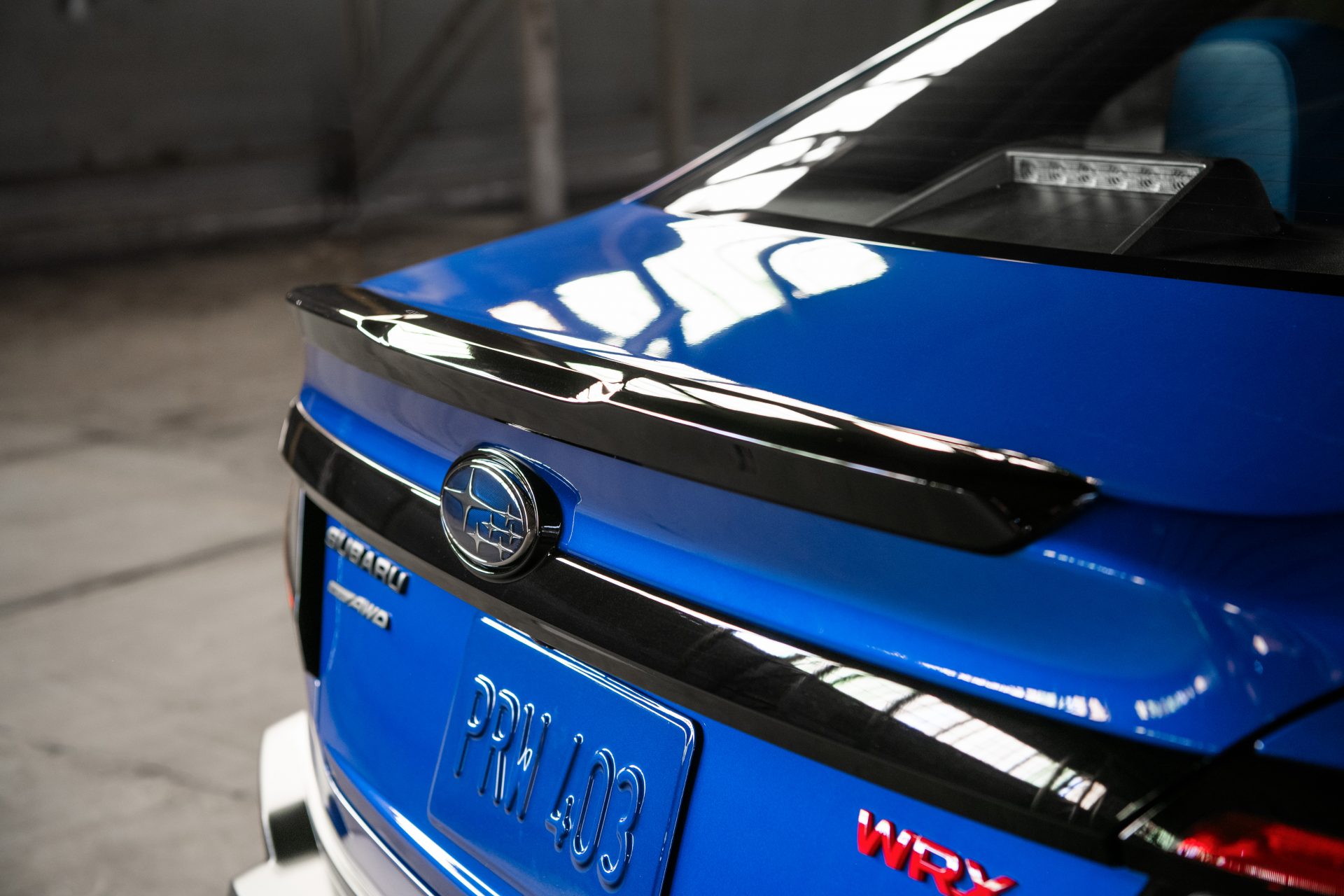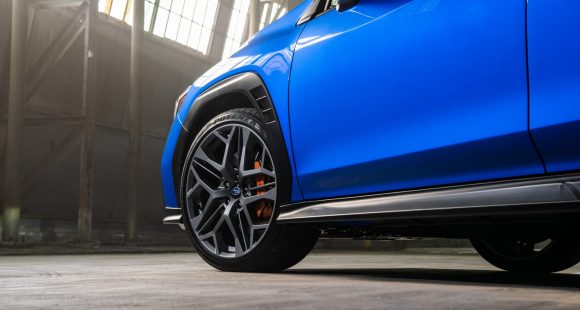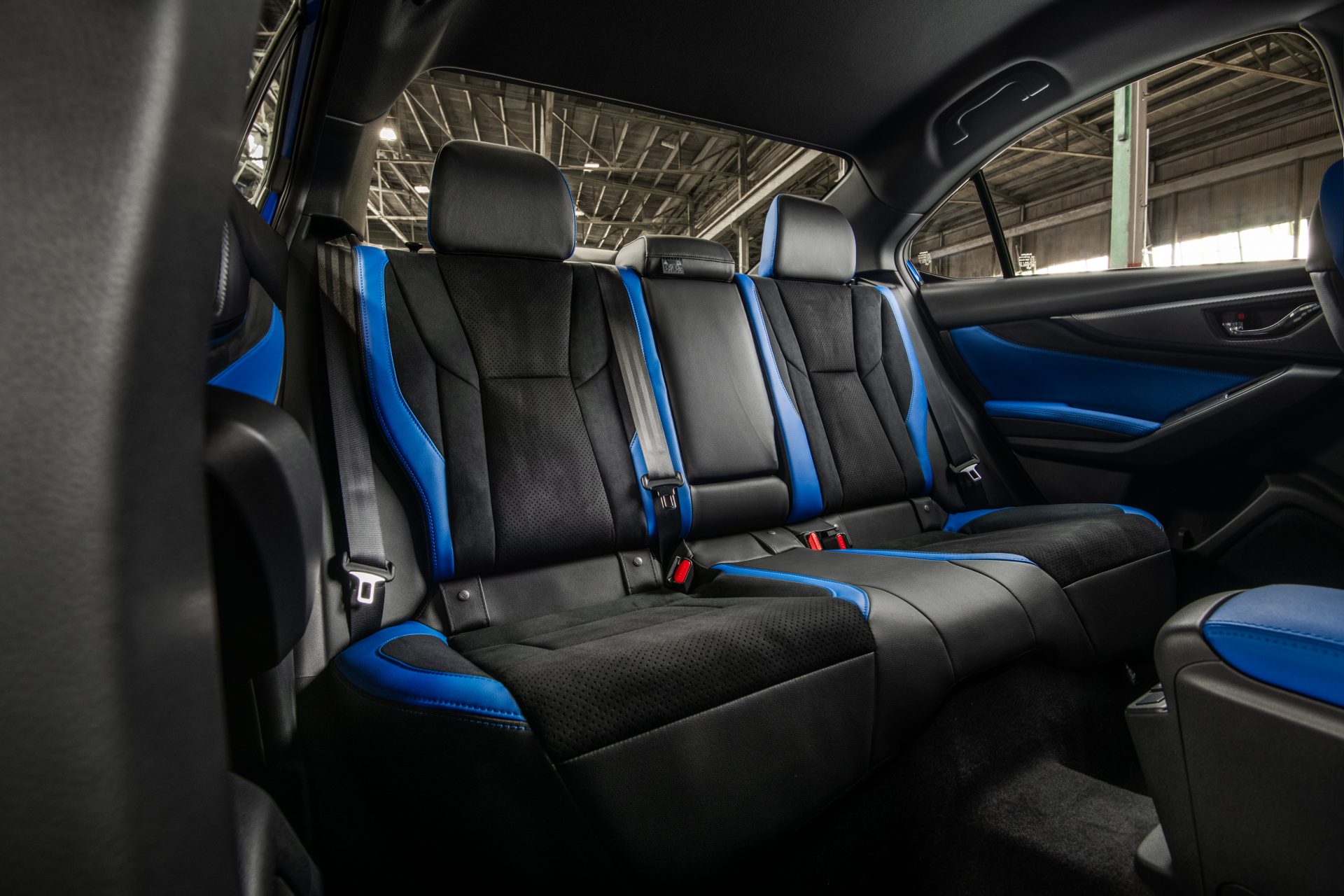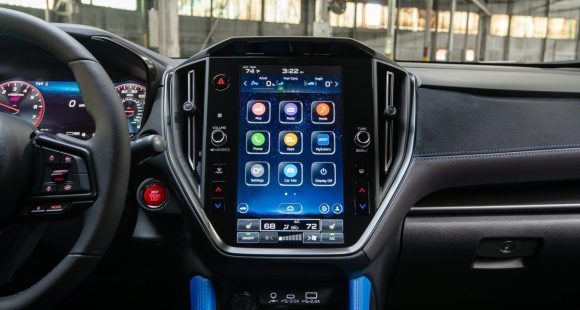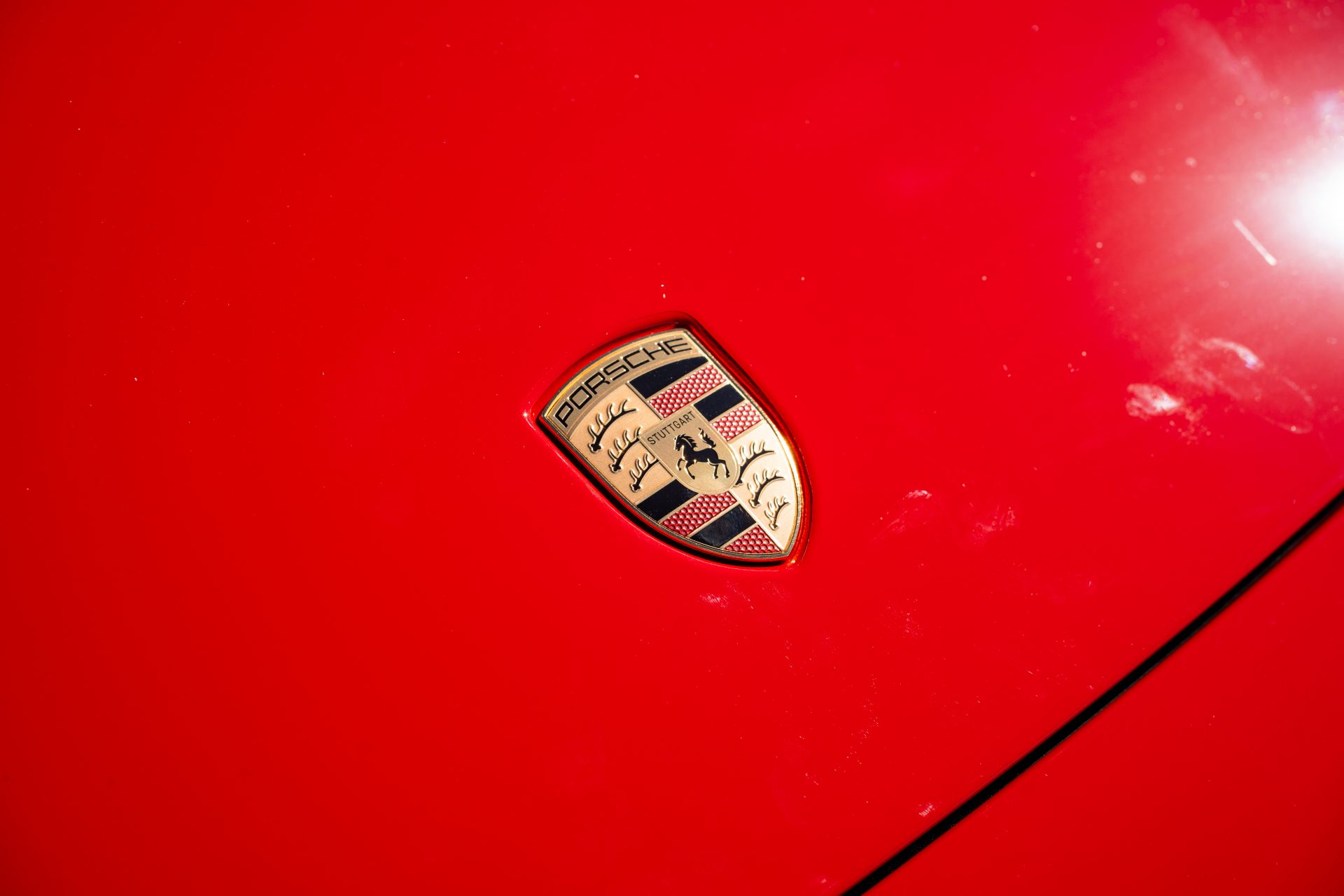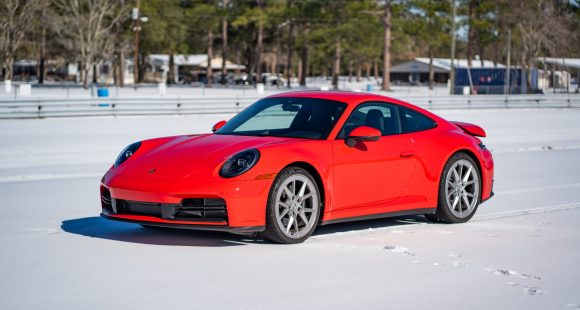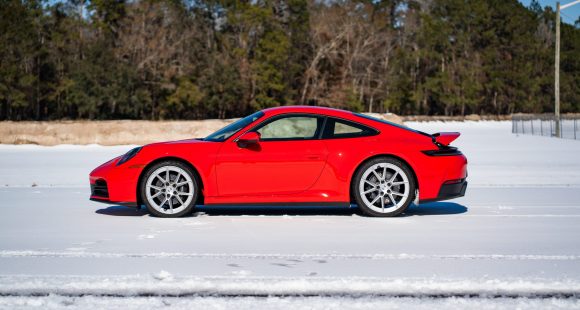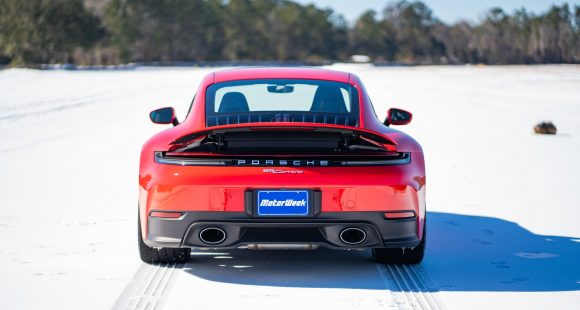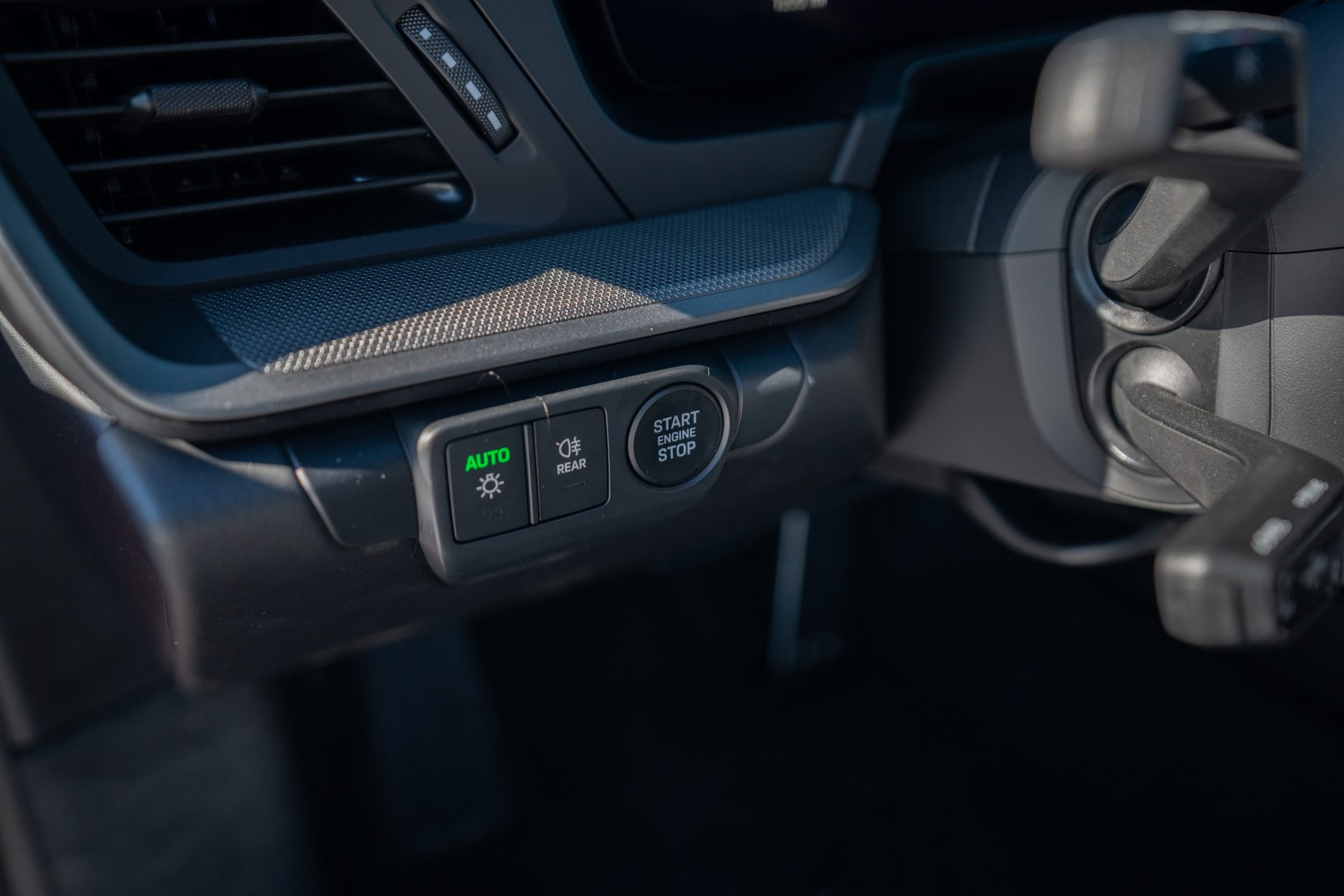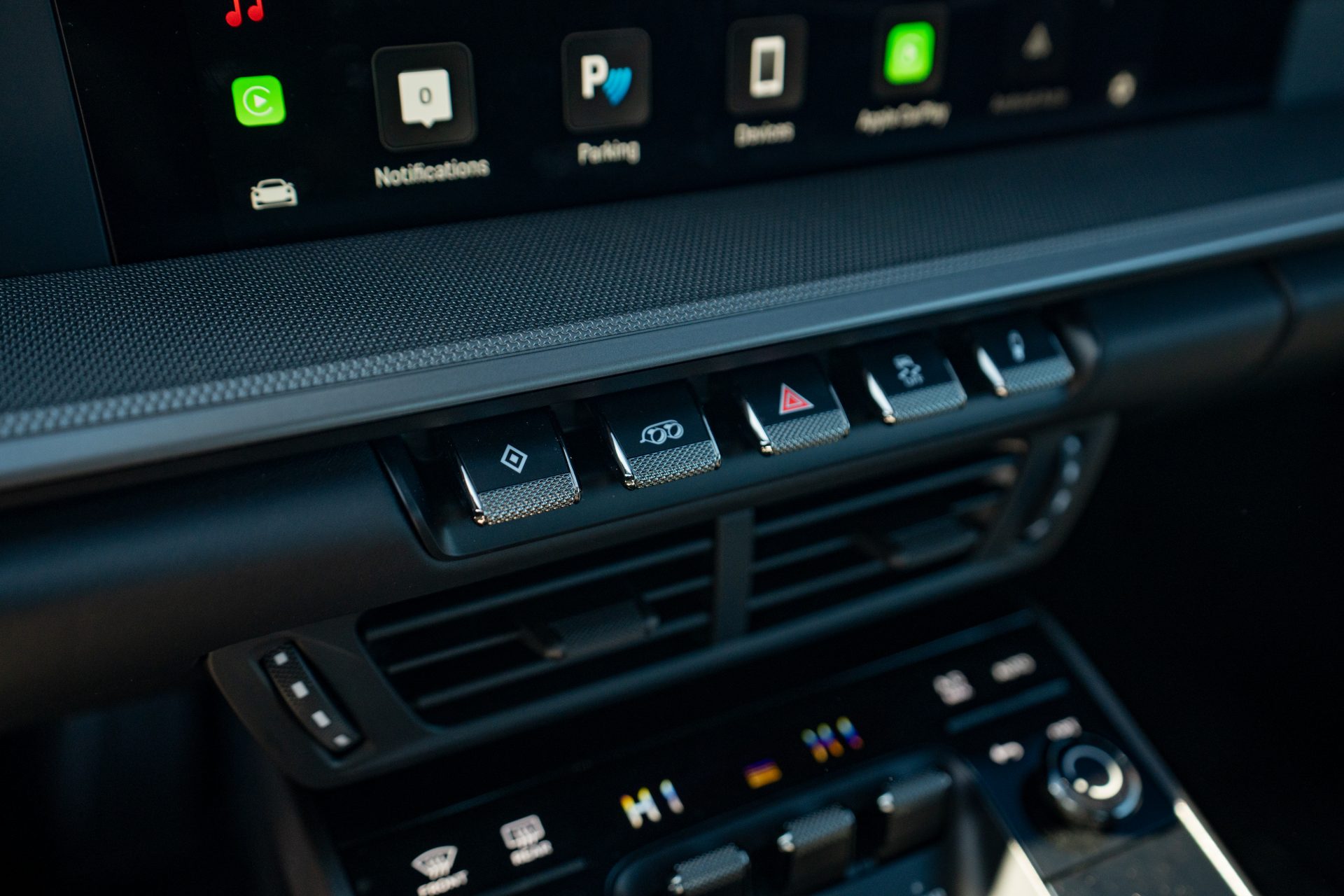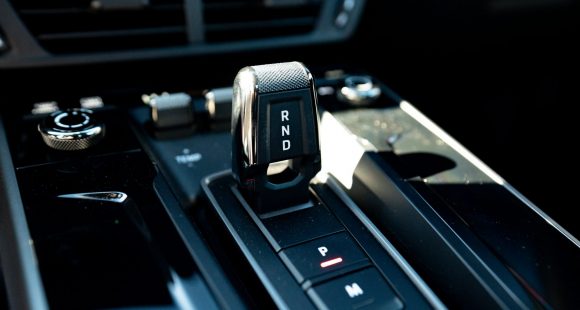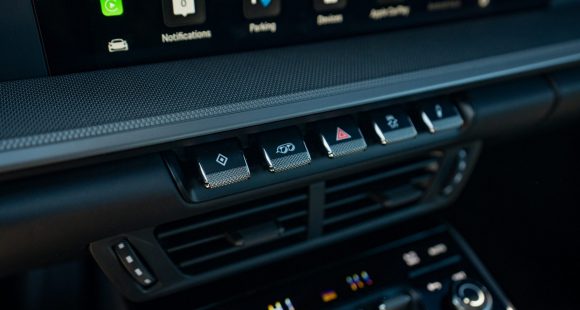2017 Kia Sportage
No vehicle tells the Kia story better than their compact Sportage utility. One of their first U.S. models, it started out as a cobbled together, rough-and-ready, rear and 4-wheel drive, mini ute. Now in its 4th generation, it has become a stylish, sophisticated, feature-packed crossover. But, with all that change, has practically taken a backseat in the Sportage?
Despite the impressive progress that the Kia brand has had in recent years, big success in the compact crossover ranks has alluded them to this point. It’s still largely the RAV4, CR-V, Rogue and Escape’s domain. But, Kia hopes to change that with this 2017 Kia Sportage.
We like the sophisticated new design, and at first we thought we were crazy for seeing a strong Porsche Macan influence. As it turns out, this Sportage was actually designed in Kia’s Frankfurt studio, so we’re not so crazy after all.
The front end, with its pinched grille and high-mounted slant-back headlights, seems to share more in common with the car side of Kia than big brother Sorento. Both those headlights, and the available LED fog lights below, are mega bright.
 And we’ve certainly taken a shine to Kia’s latest handsome interior designs as well. This primo SX looks fabulous. But just keep in mind, lower trim levels, though still very nice, are not quite the eye candy that this one is.
And we’ve certainly taken a shine to Kia’s latest handsome interior designs as well. This primo SX looks fabulous. But just keep in mind, lower trim levels, though still very nice, are not quite the eye candy that this one is.
There’s a myriad of controls, plus the available UVO 8-inch touchscreen; yet Kia continues to deliver all you need in a clean, flowing design; that’s also easy to identify and use. And we like the fact that in upper trim levels, with the 4.2-inch TFT info center in the gauges, you get a confirmation message to just about every input you make. Apple CarPlay and Android Auto are available on EX trim and above.
Yes, there are still some hard plastics around, but they are not touch points; and they seem to blend in well with the soft ones.
Steering wheel controls also rate very good, and the wheel itself has a beefy European look and feel to it.
There’s both good room and adequate seat comfort up front for adults, and an increase in size allows for additional space for the rear seat passengers too.
 Though cargo space still comes up short compared to segment kings RAV4 and CR-V at 30.7 cubic-ft. with rear seat backs up; 60.1 with them folded.
Though cargo space still comes up short compared to segment kings RAV4 and CR-V at 30.7 cubic-ft. with rear seat backs up; 60.1 with them folded.
This Sportage is based on a new chassis that is notably stiffer, so road feel is proportionally more solid; and easily more agile feeling than its main rivals. Is that the Macan’s influence again?
But’s it’s very Kia under the hood. Base is a 181-horsepower 2.4-liter I4. Upgrade is a 2.0-liter turbo-4 with 240-horsepower and 260 lb-ft. of torque.
Naturally, we much prefer the turbo, as it has more than adequate power for moving the larger Sorrento, thus making this thing feel like a rocket; a really smooth one at that. Of course you do pay a penalty in fuel economy.
Government Fuel Economy Ratings for an all-wheel-drive turbo are 20-City, 23-Highway, and 21-Combined, which we matched perfectly with our mileage loop. So, there’s a good Energy Impact Score of 15.7-barrels of oil used and 7.0-tons of CO2 emitted yearly.
Both engines connect to a 6-speed automatic, in front or all-wheel drive. Kia’s Magna Dynamax AWD system places as much priority on improved handling as it does getting you through slick conditions.
And it clearly feels very nimble through the cones; steering is also more precise than last year, yet still numb. But even with the improved capabilities, background electronic nannies become foreground fun-stoppers all too soon.
 That all-wheel-drive system also provided great grip at launch, with zero wheel spin and only some minor turbo lag. We hit 60 in a nice 7.1-seconds. Shifts, however are sluggish; not too bad, but they hindered the true potential of this engine, taking us 15.4-seconds to complete the ¼-mile at 91 miles-per-hour.
That all-wheel-drive system also provided great grip at launch, with zero wheel spin and only some minor turbo lag. We hit 60 in a nice 7.1-seconds. Shifts, however are sluggish; not too bad, but they hindered the true potential of this engine, taking us 15.4-seconds to complete the ¼-mile at 91 miles-per-hour.
On the other hand, a 110-foot average stopping distance from 60 is quite good.
A slight increase in base pricing puts a new Sportage LX at $23,885. All-wheel-drive adds $1,500 more.
Despite its continued refinement over the years, the fact that the Sportage has been unable to become a major player in the compact crossover segment is due more to the high volume of stiff competition than to any shortfalls. Regardless, there’s not much about the 2017 Kia Sportage that’s rough anymore; and it looks like the 4th time’s ready to be the charm!
Specifications
- Engine: 2.0 liter turbo
- Horsepower: 240
- Torque: 260 lb-ft.
- 0-60 mph: 7.1 seconds
- 1/4 mile: 15.4 seconds @ 91 mph
- EPA: 20 mpg city / 23 mpg highway
- Energy Impact: 15.7 barrels of oil/yr
- CO2 Emissions: 7.0 tons/yr
2025 Subaru WRX tS
Subaru’s “World Rally eXperimental” Gets Tecnica-Tuned Tech
Building on its global rally heritage, WRX has been a standalone Subaru nameplate, marketed separately from garden variety Impreza, for two generations now. And while the current WRX still lacks the full STI treatment, this WRX tS serves up some of that high-performance spice we’ve been longing for.
Before we go flat out into our Track Test of this 2025 Subaru WRX tS, lets open the Subaru dictionary so we’re all on the same page. “tS” stands for “tuned by STI;” and “STI” is an acronym for “Subaru Tecnica International,” the brand’s high-performance sub-group best known for upgrading the WRX— oh, that stands for “World Rally eXperimental,” in case you didn’t know.
All that said, STI has been largely dormant for this WRX generation, but this tS sprinkles more of their engineering magic into the mix. No, that doesn’t mean extra power, but does mean significant chassis-related improvements.
First, electronically controlled dampers, adjustable through the 11.6-inch tablet-style infotainment screen. That meant a softer “comfort” mode on the 10+ hour commute to and from Savannah’s Roebling Road Raceway. But once we were there, it was the firmer “Sport+” setting all the way, heightening response from the WRX’s throttle and already quick dual-pinion power steering system. There’s still some body roll for rally-esque weight transfer, but it’s well sorted and provides the “toss-ability” you want in a WRX.
Though if you do autocross your tS, which we implore you to do, you might feel the six-piston front, two-piston rear Brembo brakes first. The bite is strong, giving good rotation in the corners and plenty of “halt” for this 3,400 lb. compact with minimal fade, keeping us on track all week…until some unfortunate winter weather passed overhead. No worries here, as Subaru’s Symmetrical All-Wheel-Drive system got us to the track for some powdered deserts: Frosted donuts served up Michelin style, a set of winter tires different from the grippy Bridgestone Potenza S007 rubber the tS typically rides on. Some prior hot laps of California’s Sonoma Raceway gave credence to those Bridgestones, and showed us what this hot-compact can do in ideal conditions.
It’s well sorted and provides the “toss-ability” you want in a WRX.
Other tS enhancements are cabin-based, namely these beautiful blue Recaros. Most of our staff appreciated their moderately-aggressive bolstering on both street and track. And they’re even heated, too. Another tS-only appointment is this 12.3-inch digital gauge display. It mimics the standard analog gauges with some additional info, but can switch to a navigation mode for more convenient route guidance.
We do wish our tS came in the new Galaxy Purple or the trademark World Rally Blue, but this Crystal White paint wasn’t too shabby, contrasting its Cherry Blossom Red badging and blacked-out lip spoiler. Otherwise, the tS is like any other WRX, down to the hood scoop funneling air to the top-mounted intercooler.
Underneath is the same turbocharged 2.4-liter flat-four in all other trims, boxing at 271 horsepower and 258 lb-ft of torque. The freak winter weather stopped straight-line testing, but a 0-60 time estimate of 5.5 seconds is about as spry as you realistically need, pulling strong through most of the tach; though the 6,000 RPM redline required attentive shifting of the six-speed box, which the tS comes exclusively with. The throws are precise, if a little long, and the clutch is wonderfully weighted.
With discontinuation of the Base trim, pricing for the WRX now starts with Premium at $36,920. The tS is at the top of the lineup with the automatic-only GT, both starting at $46,875. All WRXs continue to be made in Gunma, Japan.
If you’re an enthusiast itching to do the tuning yourself, perhaps the 2025 Subaru WRX tS is not for you. But if you want a plug-and-play experience, this is it. While it won’t exactly bestow the loose-cannon, top-level driving skills exhibited by famous WRC drivers upon you, the tS moves this WRX’s game in a direction we’ve so desperately wanted Subaru to take.
Specifications
As Tested
- Engine: 2.4-liter flat-four
- Tranmission: 6-speed manual
- Horsepower: 271
- Torque: 258 lb-ft
2025 Porsche 911 Carrera
Ever Evolving 911 Reaches New Heights
The Porsche 911 has existed for 60 years now! Amazing! And, you could argue that major changes over all those years have been relatively few, as constant incremental improvement is more the way that Porsche does business. With that in mind, let’s hit the track in the latest 911 and see what constant improvement means for 2025.
We’ve driven so many 911s here at MotorWeek, each seemingly more special than the last, so it’s a bit refreshing to be ripping around Savannah’s Roebling Road Raceway in a 2025 Porsche 911 that’s about as close as you can get to base these days. And the fact that it’s just as fun as all those exclusive pieces says a lot about how far the 911 has come. Perhaps it also speaks to how much a base 911 will set you back today as well; more on that later.
For now, we’re just thinking about the next apex, holding steady throttle as we approach, and getting on it way sooner than you’d expect without upsetting anything, as the 911 rockets off the corner thanks to tremendous grip and a PDK trans that finds the perfect gear before we even gave it a thought. Even with very cold track temps, we never struggled for grip or battled any wheelspin coming off of corners. And trying to land it in that perfect spot in braking zones is easy with strong brake performance that was predictable and consistent lap after lap; no wandering, and great feedback too.
Yes, even the standard 911 is near pure perfection on a racetrack. It gives you all the right feedback, stays incredibly flat through corners, makes you always feel totally in control, and again is just plain fun. Unless you’re chasing lap times, there’s really no need to head further up the 911 tree. Though it is worth noting the few upgrades that were on our Carrera did help the situation a little. The 20- and 21-inch Carrera S wheels enabled plenty of grip from the 305 Pirelli P Zero tires, the Sport Chrono Package allows 0-60 sprints of 3.7 seconds, an extended range fuel tank meant we could lap all day without having to fill up, and the fantastic Sport Seats provided great support and better comfort than we remember experiencing in a 911. The Sport Exhaust system didn’t add anything to performance, but made things sound a whole lot better, and the oval silver tips look great too.
We never struggled for grip or battled any wheel spin coming off of corners.
Our track time got cut short thanks to a rare snowstorm in Coastal Georgia, but the white stuff and blue sky made the perfect backdrop for our Guards Red Carrera. Exterior tweaks for what is officially the 992.2 include a reshaped front fascia with improved aerodynamics. All front lighting is now contained within the Matrix Design LED headlight housing. The rear fascia has also been smoothed out, the license plate moved higher, and Porsche 3D block lettering spelled out across the back beneath the active rear spoiler and new decklid grille.
Even without Turbo in the name, the standard 911 engine is indeed a turbo these days, a 3.0-liter flat-six twin-turbo delivering 388 horsepower and 331 lb-ft strictly to the rear wheels in the Carrera Coupe.
Inside the cabin, the 911 continues its slow crawl towards the modern, now including a 12.6-inch fully digital gauge display and a start button located on the left side of the steering wheel, with drive modes easily accessible on the wheel itself. In another no brainer move, Porsche now makes the rear seat a no cost option, so you can choose if you want it or not.
Government Fuel Economy Ratings are 18 City, 25 Highway, and 21 Combined. That’s only slightly worse than average for the Energy Impact Score; 14.2 barrels of annual oil consumption with 7.0 tons of CO2 emissions.
The good news is this 911 had the fewest number of options of any Porsche that we’ve tested in some time, and it was still plenty awesome; the bad news is, a base Porsche 911 Carrera Coupe now starts at $122,095.
But can you really put value on “the force,” this mythical power that Porsche seems to have, that somehow turns average drivers into great ones? It’s useless to resist as far as we’re concerned, as it only gets better with the 2025 Porsche 911 Carrera.
Specifications
As Tested
- Engine: 3.0-liter twin-turbo flat-6
- Transmission: 8-speed PDK
- Horsepower: 388
- Torque: 331 lb-ft















